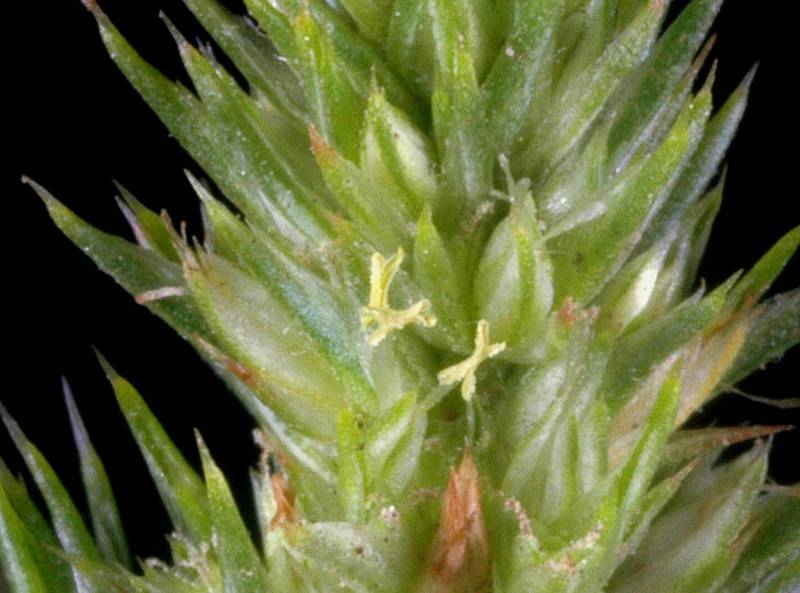Amaranthus muricatus
Amaranthus powellii
green amaranth, Powell's amaranth
Leaves alternate, the blade lanceolate or ovate to deltoid-elliptic, 2-10 cm. long, usually glabrous, narrowed abruptly to petioles about as long.
Flowers numerous in crowded, spike-like, terminal or axillary clusters that are usually compound and up to 15 cm. long, subtended by several linear-lanceolate, spine-tipped bracts 2.5-5 mm. long;
sepals somewhat unequal, those of the pistillate flowers about equal to the fruit, 2-3 mm. long, narrowly oblong, acute to obtuse;
petals none;
stamens usually 3;
styles 3.
1-seeded capsule.
Amaranthus muricatus
Amaranthus powellii
Occurring on both sides of the Cascades crest in Washington; British Columbia to California, east across North America to the Atlantic Coast.
- Local floras:
BC,
CA,
OR,
WA
- Local Web sites:
CalFlora,
CalPhotos,
Flora NW,
PNW Herbaria
WildflowerSearch
iNaturalist (observations)
USDA Plants Database
- LBJ Wildflower Center
- SEINet
- Plants of the World Online
- Encyclopedia of Life
- Wikipedia
- Google Image Search


